
Mystery Solved: How Bats Can Land Upside Down
The flying mammals have some of the heaviest wings in nature, which has made their acrobatic feats a puzzle for scientists—until now.
A landing bat is one of nature’s most remarkable stunts. Flitting into some nook or hollow, the winged mammal can flip itself over and come to rest hanging head first—all in mere seconds.
How bats pull off these upside-down feats has long been a puzzle, not least because bats have the heaviest wings, relative to overall body weight, of any flying animal.
Now scientists think they have the answer. Turning their cumbersome wings into an advantage, bats use the extra weight to generate the force needed to execute their unique maneuvers, a new study says. (Also see "How Do Swarming Bats Avoid Crashing Into Each Other?")
In the experiments, published November 16 in the journal PLOS Biology, scientists trained Seba’s short-tailed bats (Carollia perspicillata) and lesser dog-faced fruit bats (Cynopterus brachyotis) to fly into an enclosure and land on a piece of mesh fixed to the ceiling.
High-speed video shows that at the moment of flipping over, the bats pull one wing closer to their body while the other is fully extended.
The team says that by shifting their weight in this way, the bats harness the force known as inertia, enabling them to land feet up in a fraction of a second.
Like figure skaters who use inertia to spin faster by bringing their arms closer to their body, or divers who shift their body weight to perform twists and somersaults, bats employ the trick with expert precision, the study found.
Flight Simulations
To confirm the discovery, the team replayed the bat’s movements using computer simulations in which the effects of inertia or aerodynamic forces could be switched on or off. The simulations showed that the virtual bats moved like the real ones using inertia alone. (Related: "Bats and Sloths Don't Get Dizzy Hanging Upside Down—Here's Why.")
When the scientists ran similar simulations with virtual fruit flies, however, they found the flies, which have featherweight wings, could not land upside down without using aerodynamic forces.
The discovery affirms suspicions that bats use a force other than aerodynamics for their aerobatics, says study co-author Kenny Breuer, a professor of engineering at Brown University in Rhode Island.
“I would imagine that they use inertial forces for every aspect of their maneuvering,” Breuer adds, even if “we don’t have any direct evidence of this yet.”
Anders Hedenström, an evolutionary ecologist at Lund University in Sweden, says the inertia finding makes sense, especially when bats are roosting. (See "6 Bat Myths Busted: Are They Really Blind?")
That's because bats need to fly at high speeds to generate such forces, and they can't do that in tight, small spaces such as caves or attics.
Unlike birds, bats can’t fly upside down, he adds, “so they have to rely on inertia.”
Which Came First?
So do other animals, such as birds, use inertia to fly? It's questionable, according to study co-leader Sharon Swartz, a professor of biology.
“Some birds have relatively light wings, but some have wings almost as heavy as bats,” she noted via email. “The real difference is that [birds] have many fewer joints, so they can’t manipulate wing geometry and position in the way that bats can.”
16 Incredible Pictures of Bats





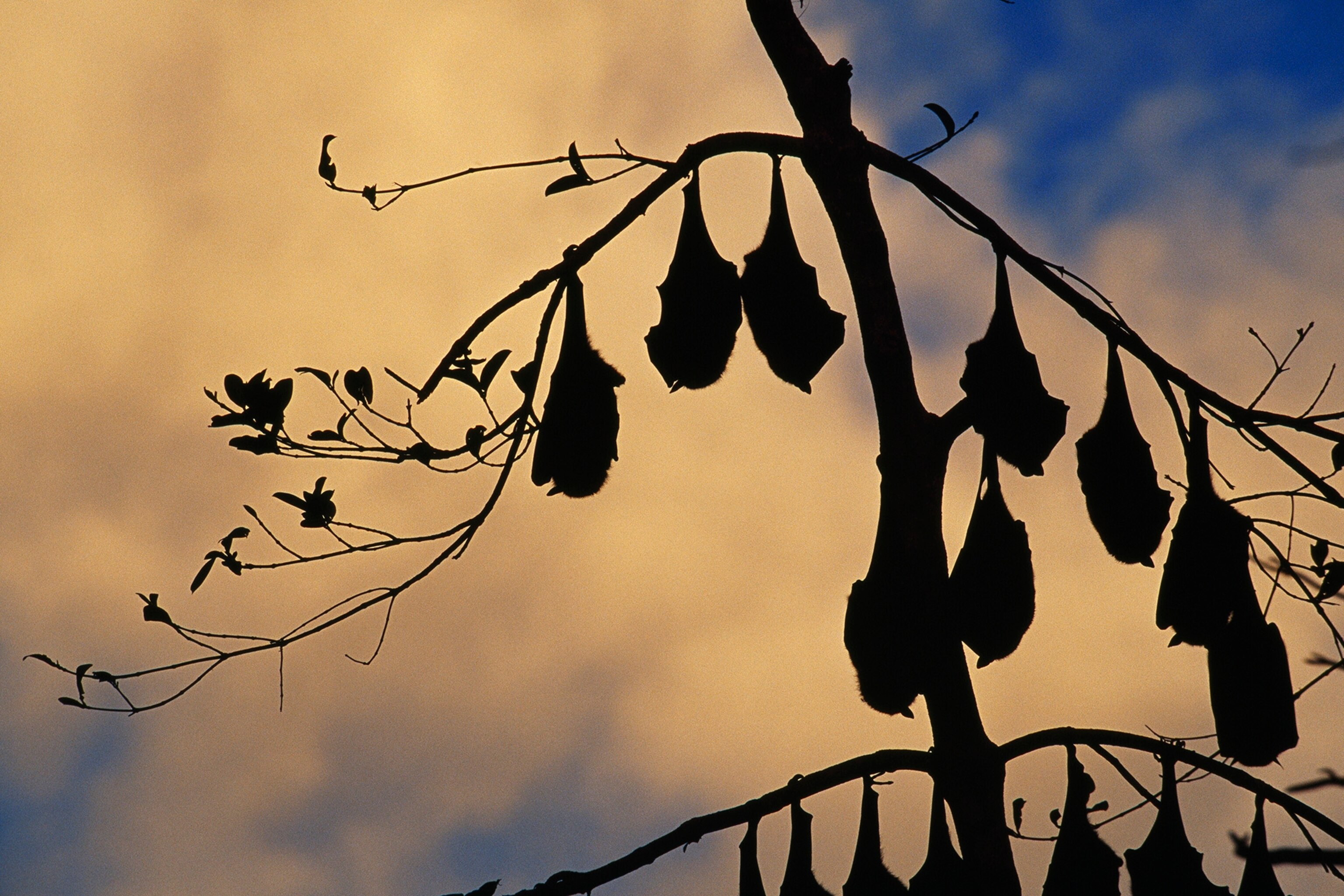
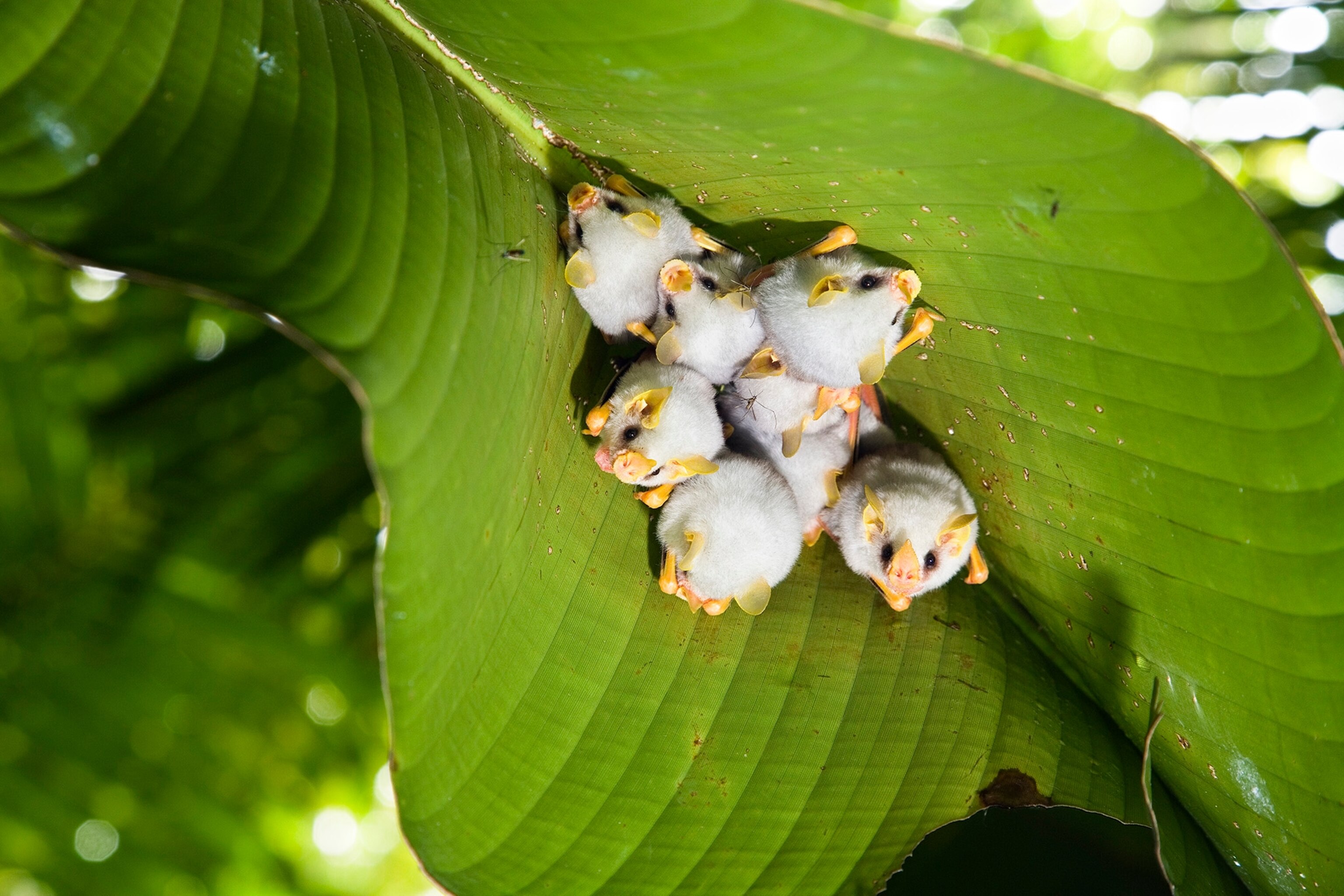
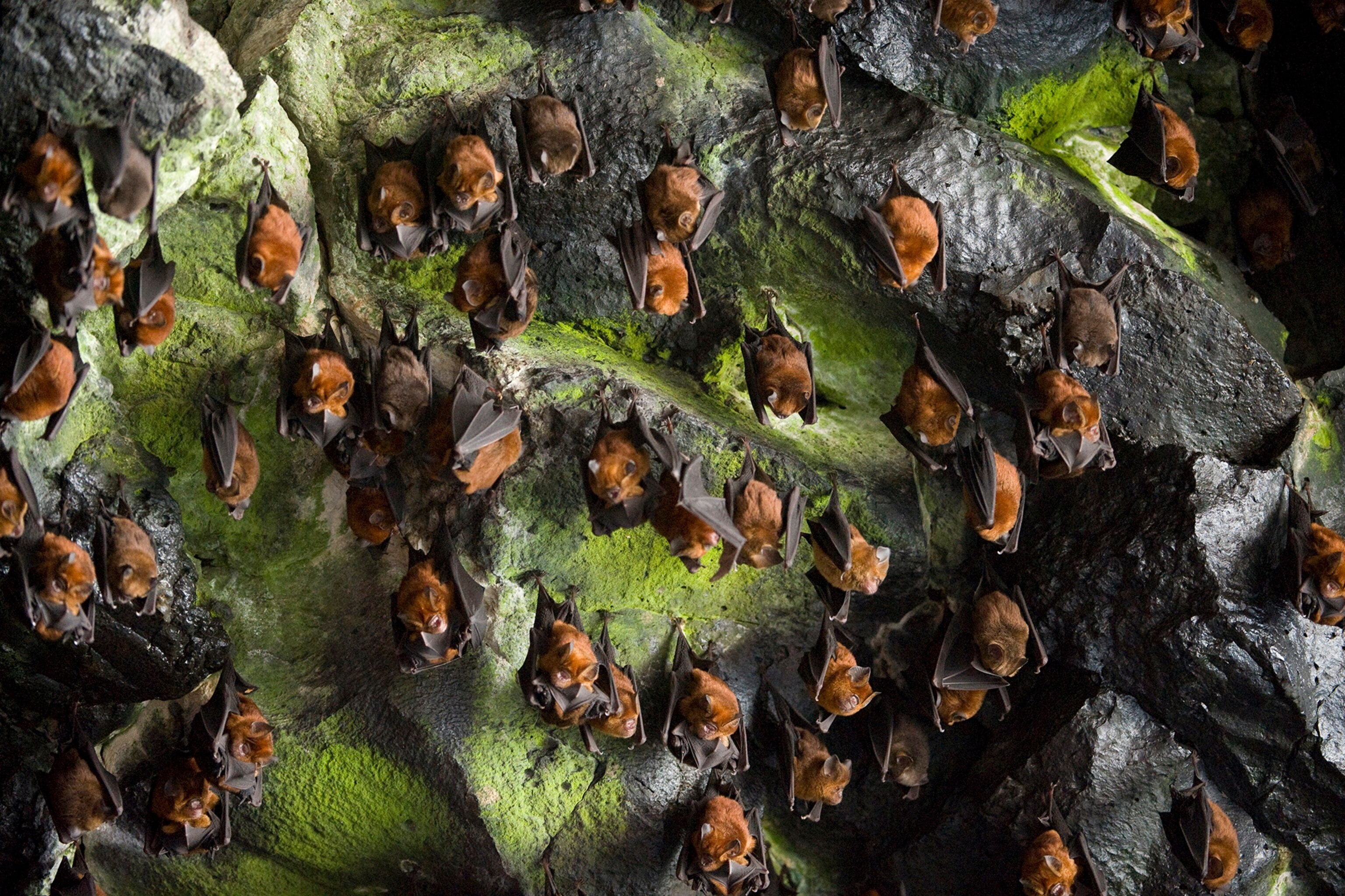


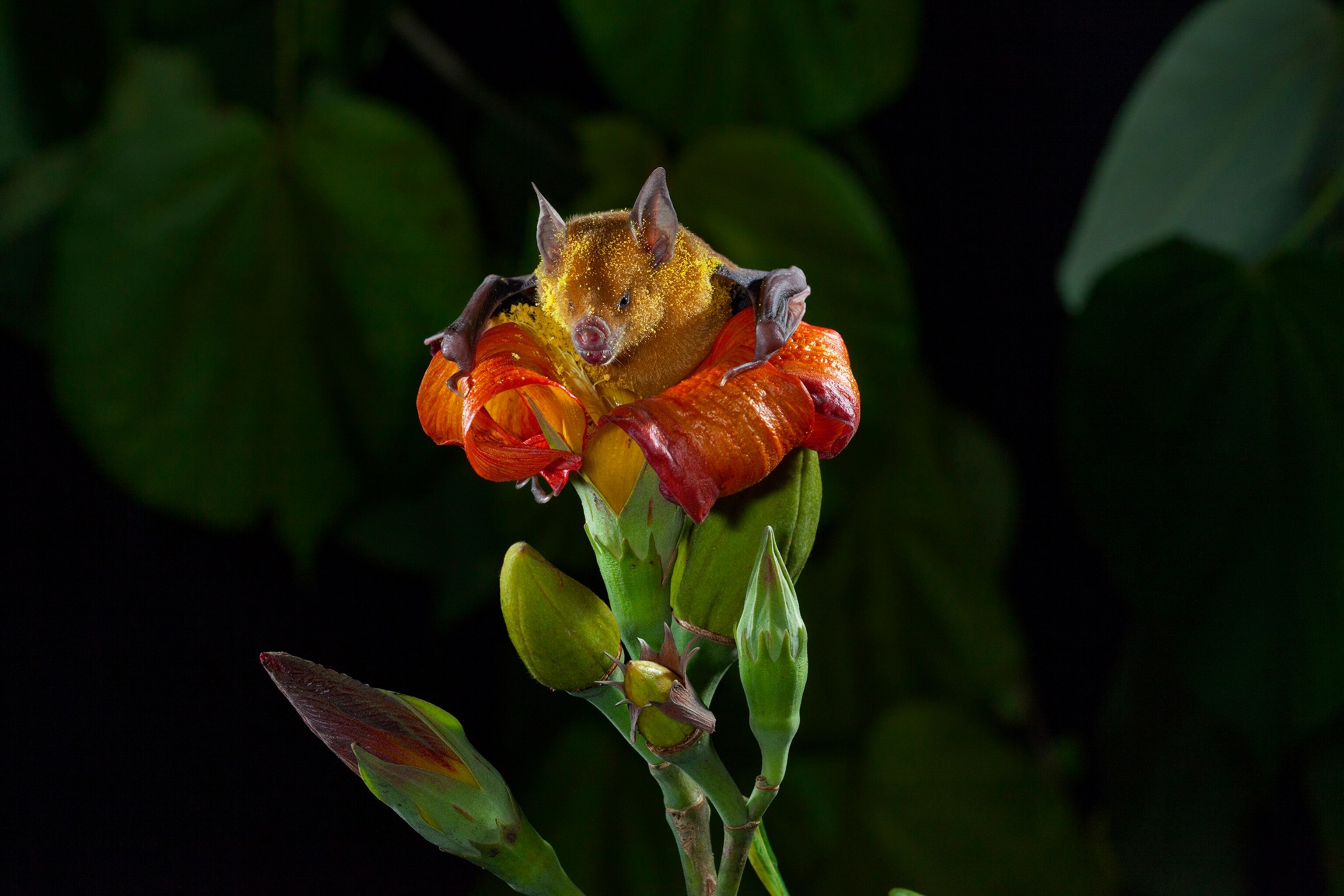
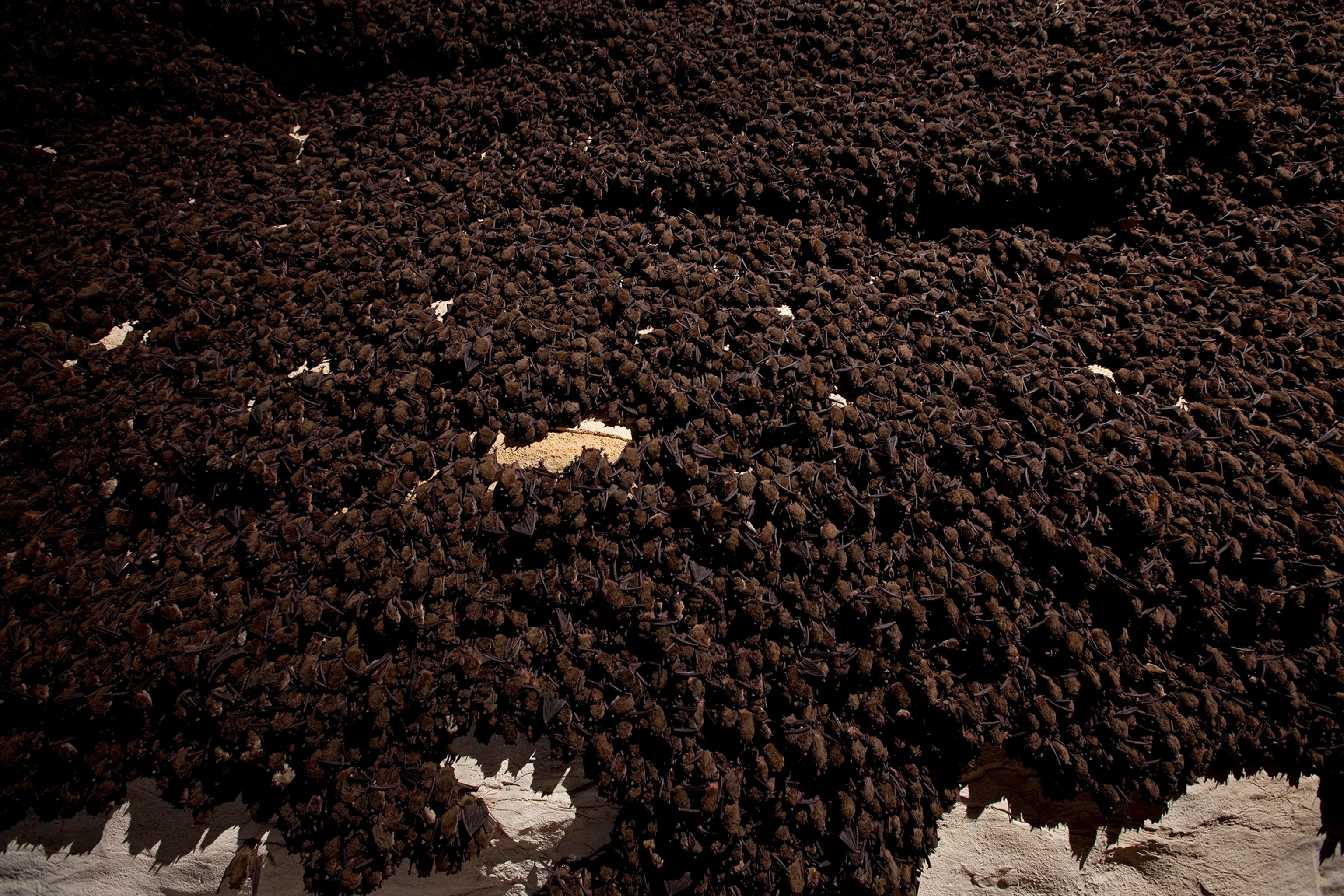


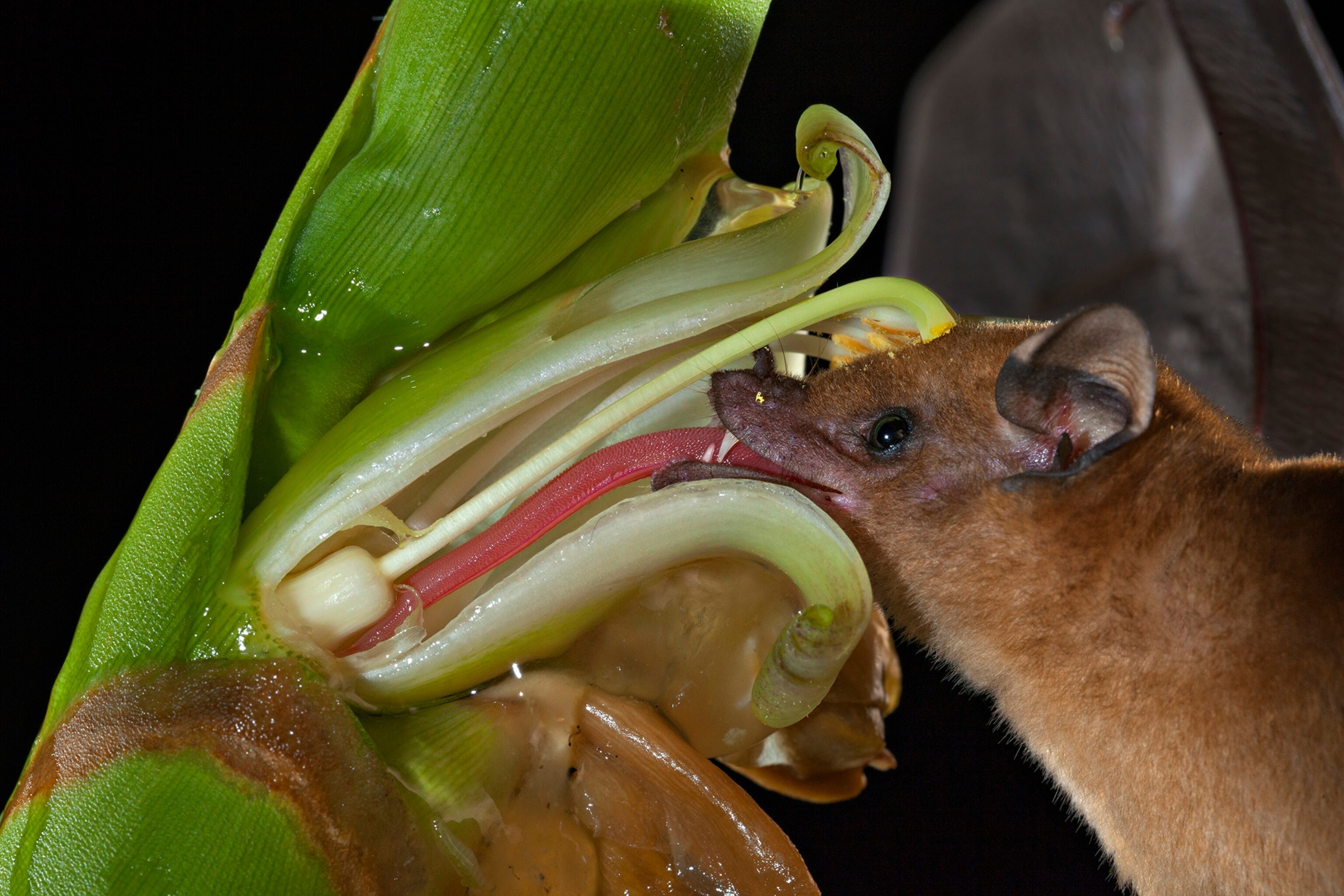

“Being a dexterous mammal with a big brain to control lots of muscles and joints really matters here,” she added. (See National Geographic's best bat pictures.)
Nor is it clear if bats evolved beefy wings to help with upside-down landings, or whether it’s a case of making the best of what they’re given.
Evolved from non-flying mammals, it could be that bats are still a work in progress. “If we had a time machine and could return to earth in another hundred million years, we might see even lighter wings in bats,” Swartz says.
Another solution would be not to bother with hanging upside down. And, actually, a few bats do just that. For example, disc-winged bats have suction cups on their wings for roosting head up on leaves.
Not very Dracula, but Batman might go for it.
You May Also Like
Go Further
Animals
- Octopuses have a lot of secrets. Can you guess 8 of them?
- Animals
- Feature
Octopuses have a lot of secrets. Can you guess 8 of them? - This biologist and her rescue dog help protect bears in the AndesThis biologist and her rescue dog help protect bears in the Andes
- An octopus invited this writer into her tank—and her secret worldAn octopus invited this writer into her tank—and her secret world
- Peace-loving bonobos are more aggressive than we thoughtPeace-loving bonobos are more aggressive than we thought
Environment
- Listen to 30 years of climate change transformed into haunting musicListen to 30 years of climate change transformed into haunting music
- This ancient society tried to stop El Niño—with child sacrificeThis ancient society tried to stop El Niño—with child sacrifice
- U.S. plans to clean its drinking water. What does that mean?U.S. plans to clean its drinking water. What does that mean?
- Food systems: supporting the triangle of food security, Video Story
- Paid Content
Food systems: supporting the triangle of food security - Will we ever solve the mystery of the Mima mounds?Will we ever solve the mystery of the Mima mounds?
History & Culture
- Strange clues in a Maya temple reveal a fiery political dramaStrange clues in a Maya temple reveal a fiery political drama
- How technology is revealing secrets in these ancient scrollsHow technology is revealing secrets in these ancient scrolls
- Pilgrimages aren’t just spiritual anymore. They’re a workout.Pilgrimages aren’t just spiritual anymore. They’re a workout.
- This ancient society tried to stop El Niño—with child sacrificeThis ancient society tried to stop El Niño—with child sacrifice
- This ancient cure was just revived in a lab. Does it work?This ancient cure was just revived in a lab. Does it work?
Science
- The unexpected health benefits of Ozempic and MounjaroThe unexpected health benefits of Ozempic and Mounjaro
- Do you have an inner monologue? Here’s what it reveals about you.Do you have an inner monologue? Here’s what it reveals about you.
- Jupiter’s volcanic moon Io has been erupting for billions of yearsJupiter’s volcanic moon Io has been erupting for billions of years
- This 80-foot-long sea monster was the killer whale of its timeThis 80-foot-long sea monster was the killer whale of its time
Travel
- How to plan an epic summer trip to a national parkHow to plan an epic summer trip to a national park
- This town is the Alps' first European Capital of CultureThis town is the Alps' first European Capital of Culture
- This royal city lies in the shadow of Kuala LumpurThis royal city lies in the shadow of Kuala Lumpur
- This author tells the story of crypto-trading Mongolian nomadsThis author tells the story of crypto-trading Mongolian nomads




